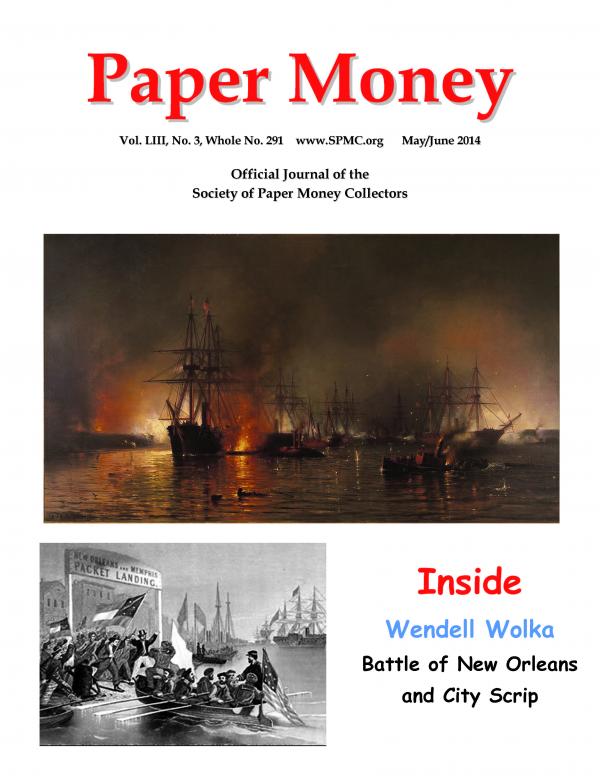Please sign up as a member or login to view and search this journal.

Table of Contents
Enemy at the Gates: The Fall of New Orleans................. 155
by Wendell Wolka
The Paper Column--Enhanced Small Size
$10 Master Back Plate......................................... 173
by Peter Huntoon and Jamie Yakes
A Rare Dual-State Obsolete Sheet................................... 176
by Robert Gill
Alabama Obsolete Notes New Discoveries...................... 178
by Bill Gunther
FDR Portrait Proposed for U.S. $3 Silver Certificates...... 185
by Lee Lofthus
A Civil War Draft Commutation Receipt............................ 186
by Terry Bryan
About Texas Mostly 1st Nat’l Bank of Ketchikan, AK...... 190
by Frank Clark
Small Notes—Series of 1950 “12/12” Specimens........... 192
By Jamie Yakes
Texas Currency Exhibit at Capitol Visitors Center............ 193
The Western Exchange Fire & Marine Insurance Co....... 195
by Marv Wurzer
Uncoupled—Short Snorters............................................. 204
by Joe Boling and Fred Schwan
Chattanooga Depression Scrip......................................... 208
by Dennis Schafluetzel
Paper Money Classes at ANA Summer Seminar............. 212
SPMC Activities at ANA Atlanta....................................... 215
President’s Column—Pierre Fricke................................... 218
SPMC New Members—Frank Clark................................. 219
Editor Sez—Benny Bolin.................................................. 220
Chump Change—Loren Gatch........................................ 221
An Index to 2013 Paper Money—Terry Bryan.................. 222
Money Mart....................................................................... 229


